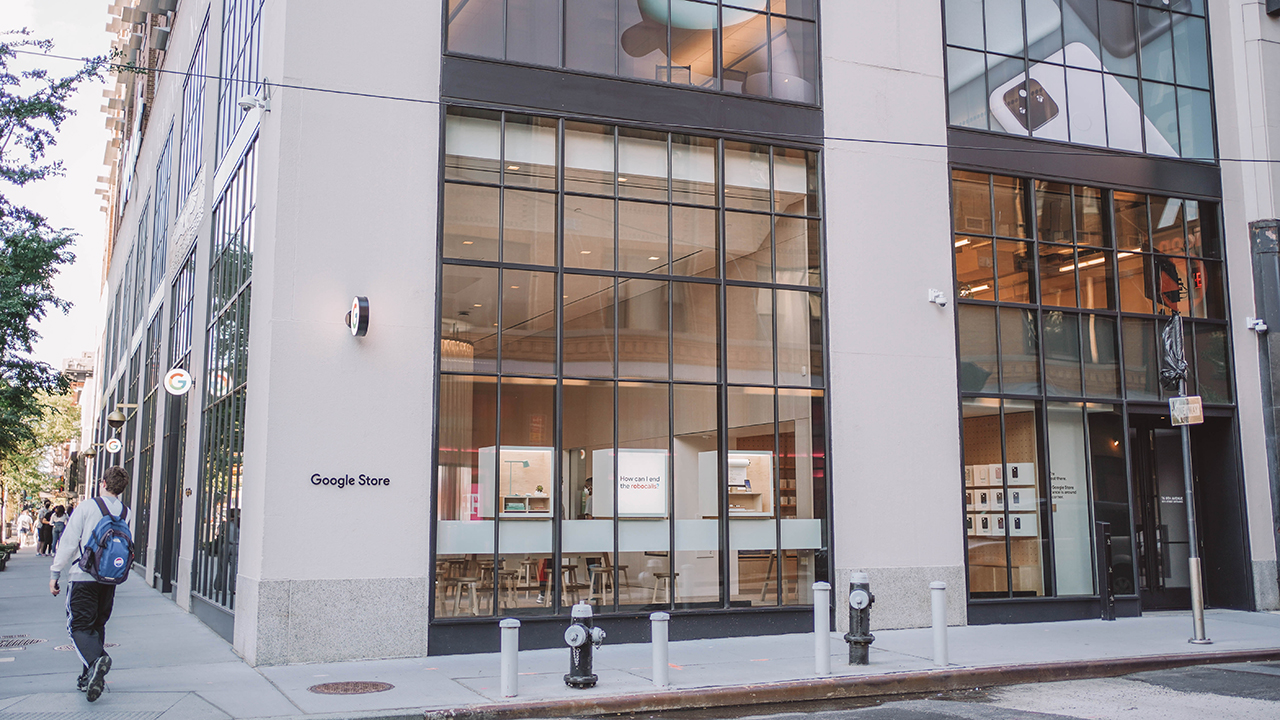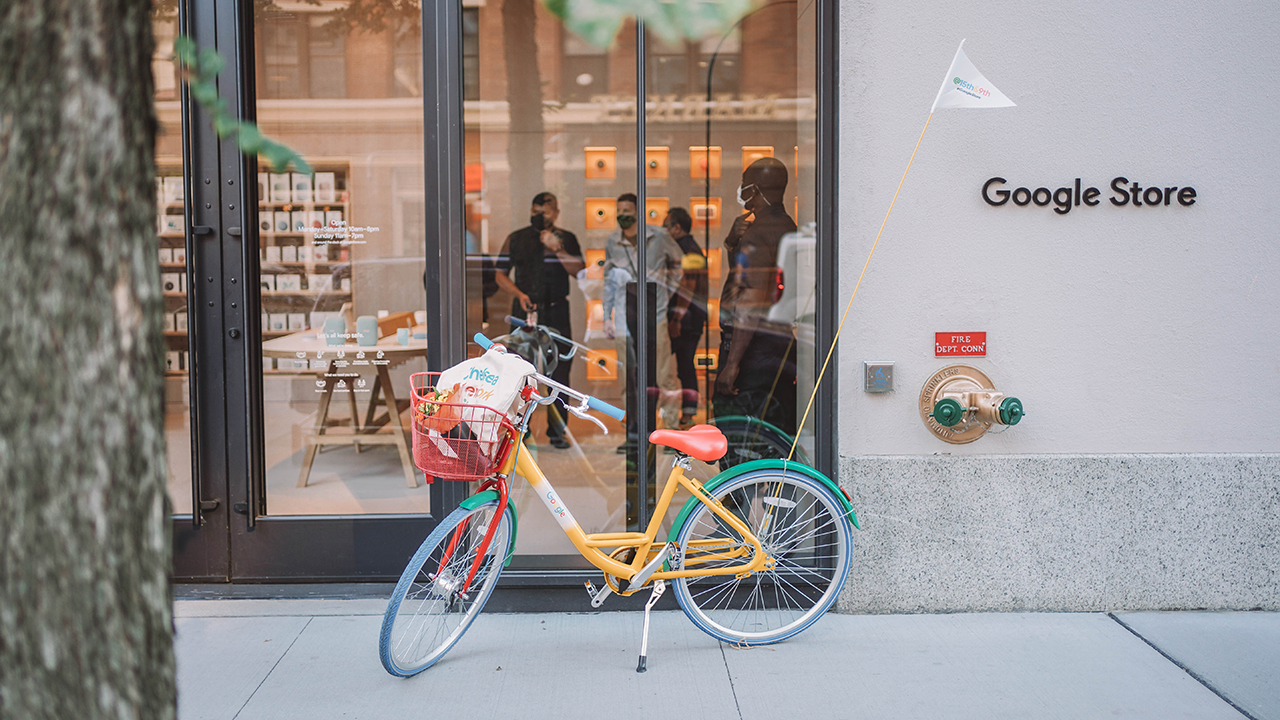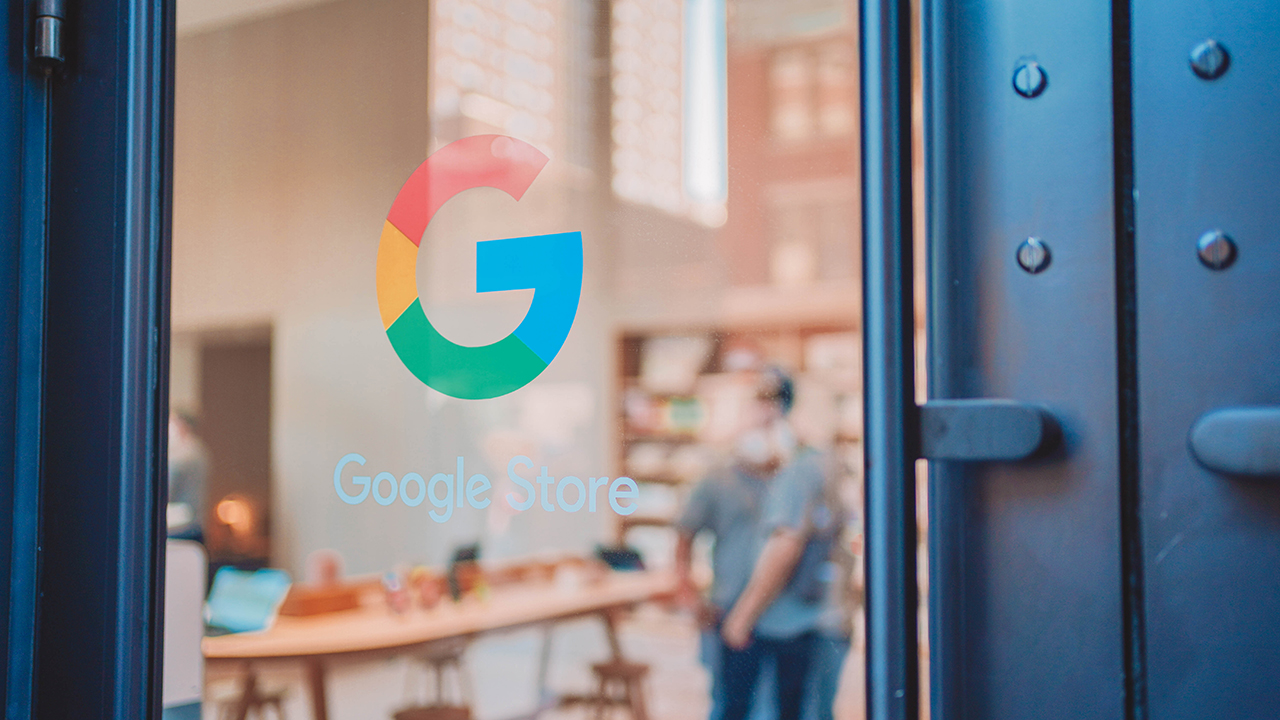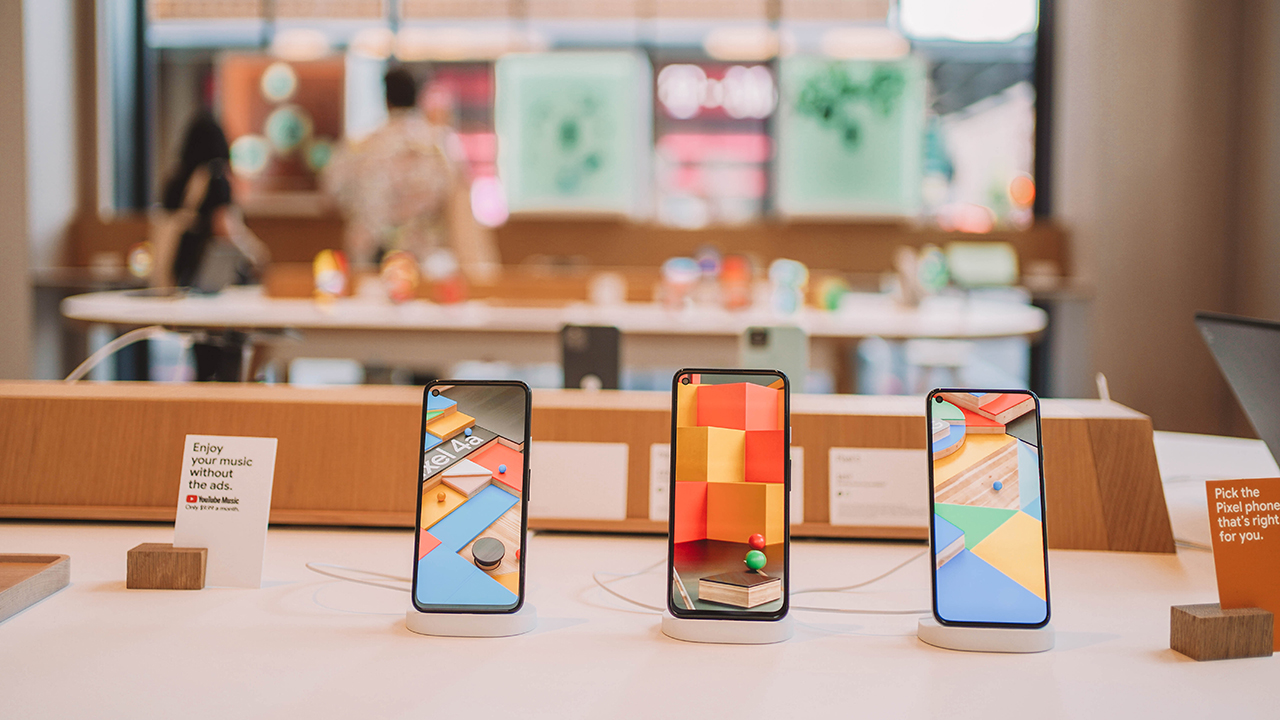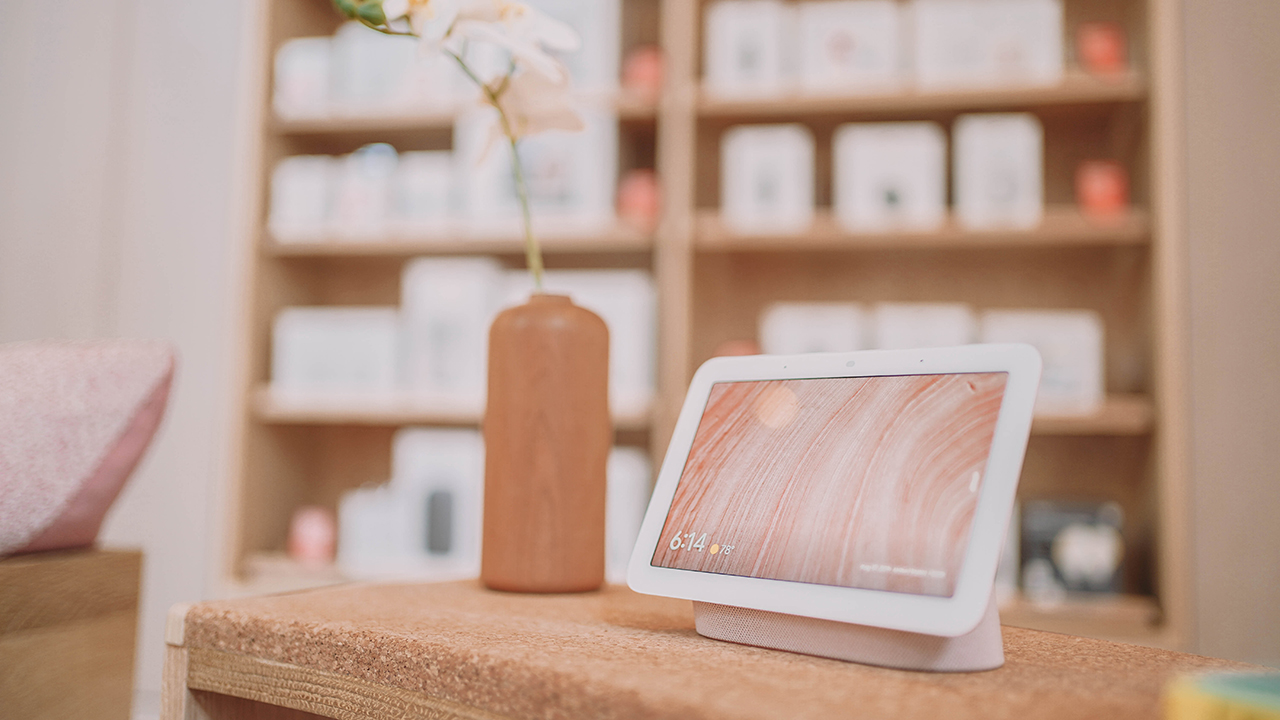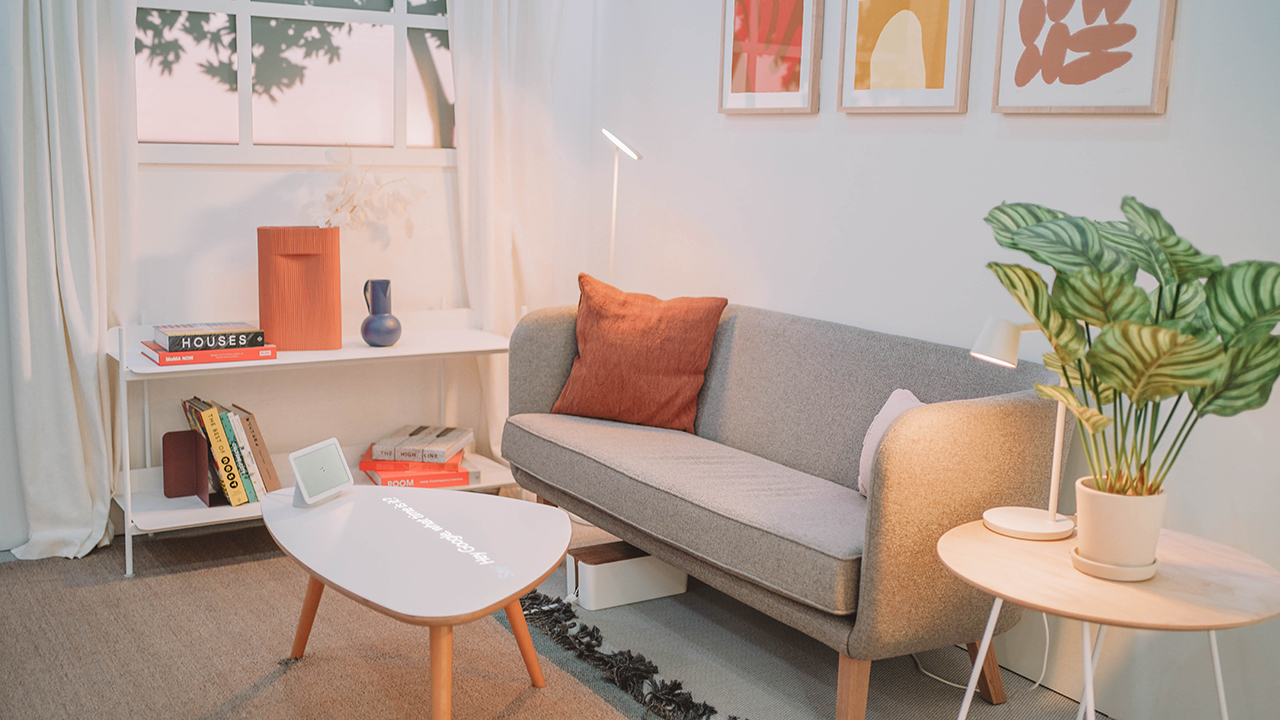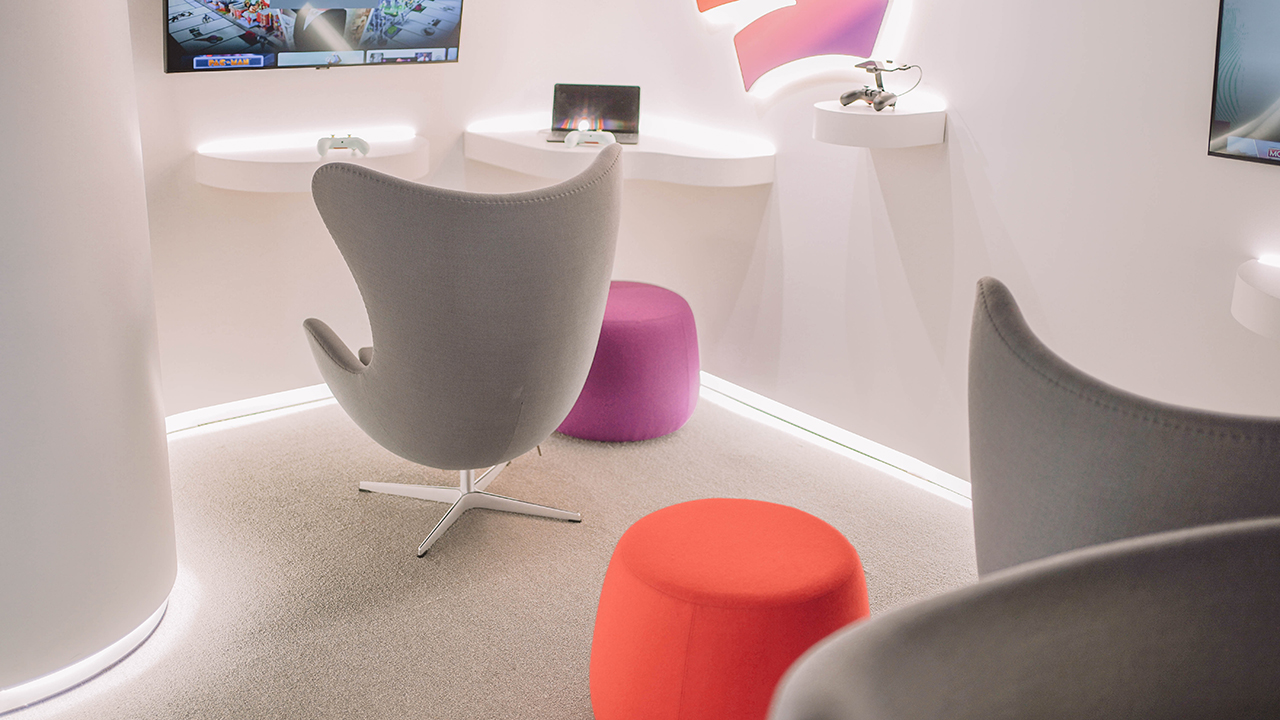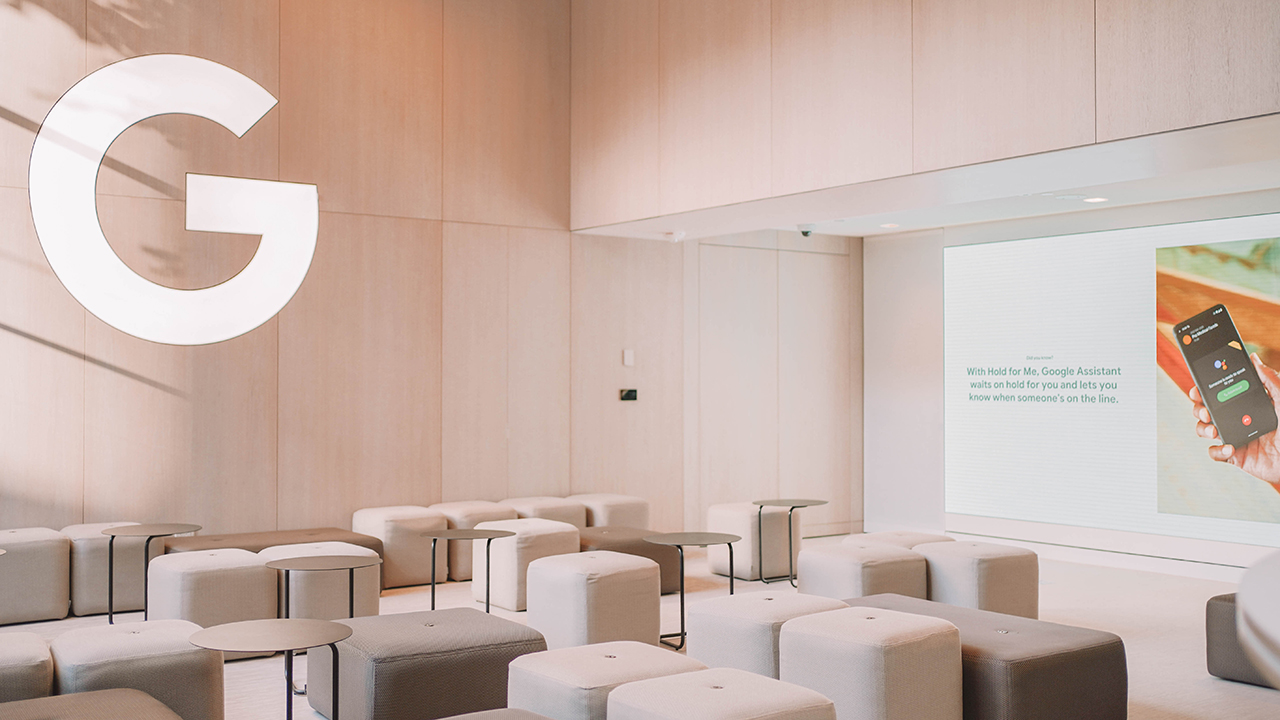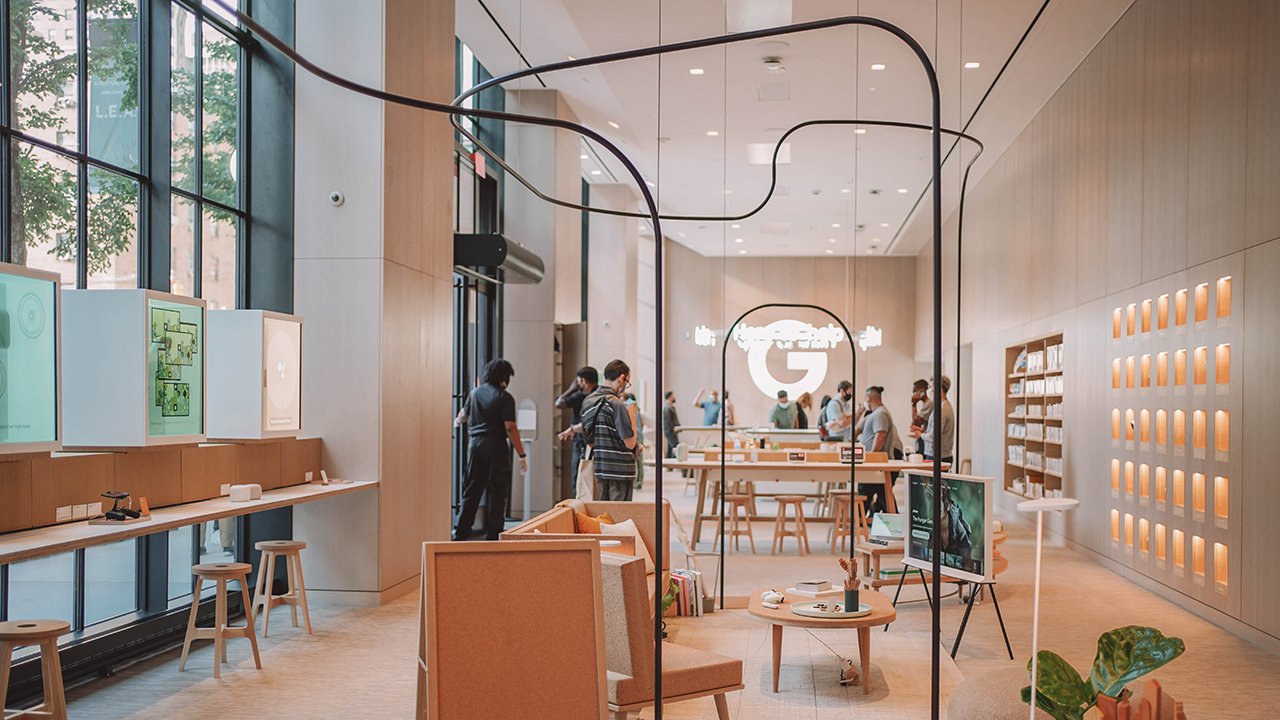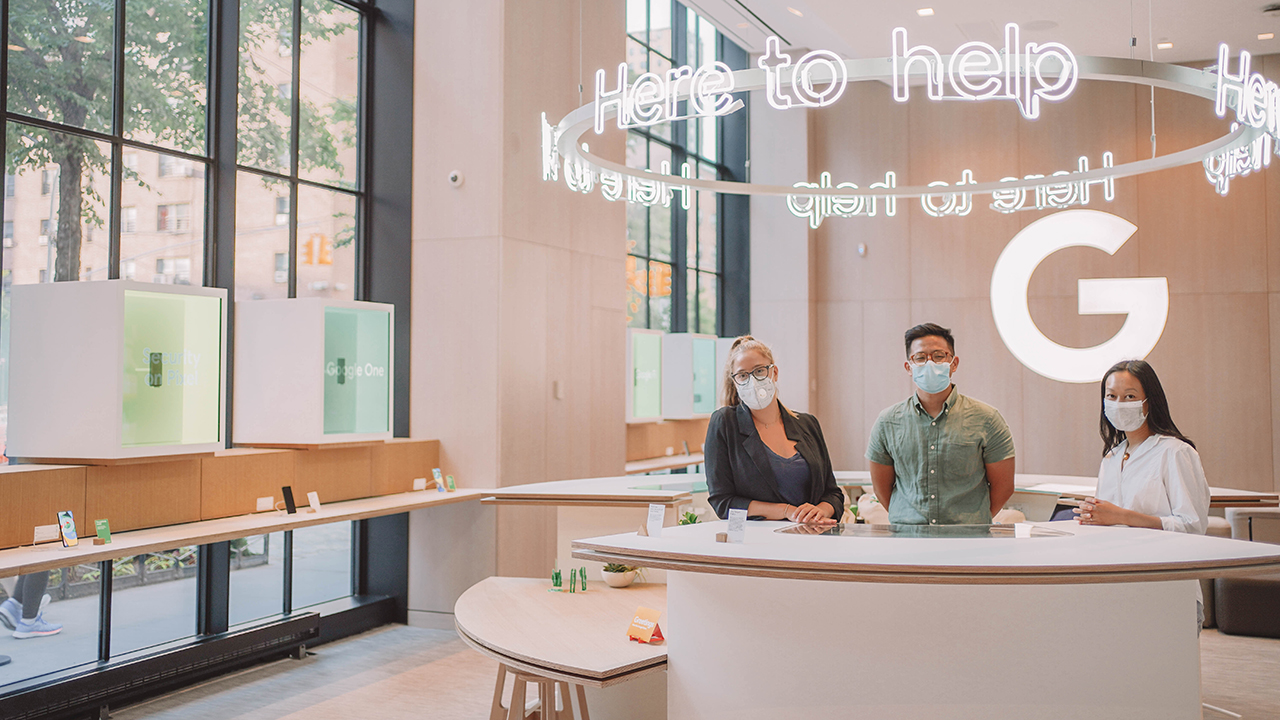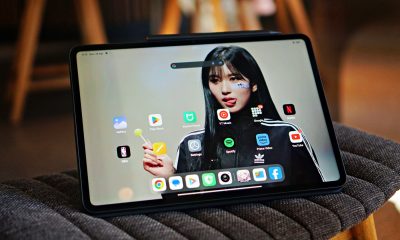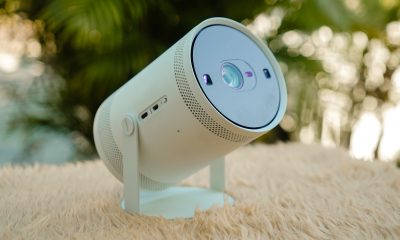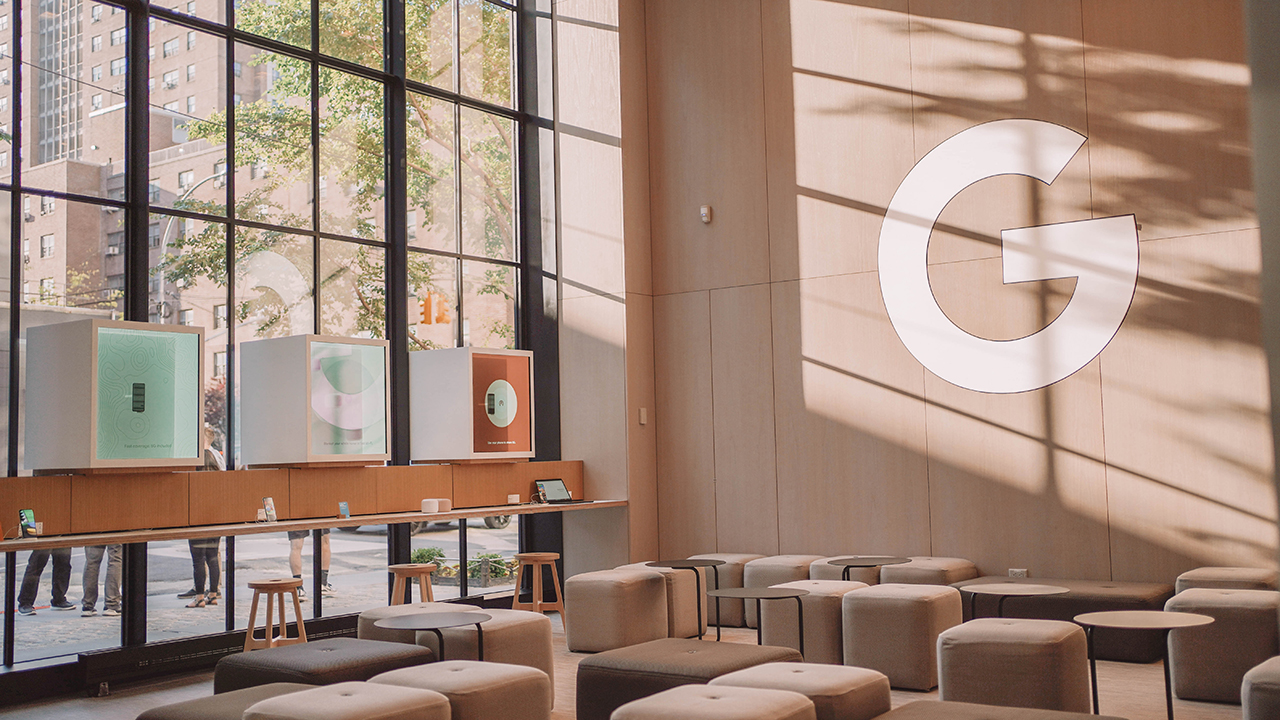
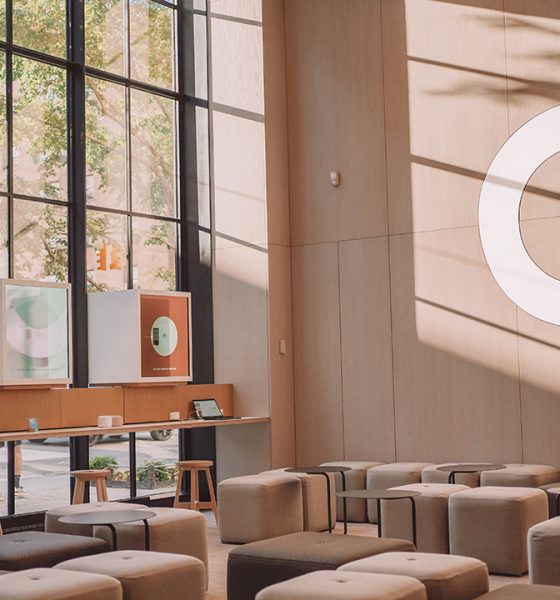
Enterprise
Touring the first Google Store in New York City
An exquisite experience of technology, commerce, and design
After pop-up shops and showrooms, Google finally opened its first physical retail store in the city that never sleeps.
Located on 15th and 9th by Chelsea Market in Manhattan, the Google Store in NYC offers a hip and smart experience echoing the vibe of its trendy community location.
Earlier this week GadgetMatch was invited to a special preview. Here is what we saw.
A spectacle of architecture and technology
The new Google Store features floor to ceiling glass that allows a glimpse of its sophisticated exteriors.
A Google campus bike is parked outside the store.
Come on, let’s have a look.
My senses are… overwhelmed
The Google Store is intended to be both a space where one can experience the entire range of Google hardware, and a shop for those wanting to take it all home.
From Pixel phones and Nest products to Fitbit wearables and even Pixelbooks — there’s a lot to explore and experience.
An interactive exhibit
There’s a 17-foot-tall circular glass structure near the main entrance called the Google Imagination Space. It’s a set of custom interactive screens featuring rotating exhibits of the best of Google’s products and technologies.
It was designed and engineered with local New York partners so you can probe the possibilities of Google Translate and the capabilities of machine learning. You can try a real-time translation of your speech into 24 languages simultaneously when you speak to the exhibit. If you want to know the technology behind it, the exhibit will also showcase the hows.
The Nest Living Room
The Google Store lets you play on their sandboxes. One is the Nest Sandbox, decorated as a simulated living room filled with Nest products.
You can explore how Nest provides useful solutions that you can apply — should you decide to build your own Nest smart home.
It’s definitely social-media-worthy, in case you ever want to drop by.
Stadia Sandbox
Of course, there’s a dedicated space for those who love playing games. You can freely experience and game on Stadia through the Stadia Sandbox.
The whole vibe speaks futuristic and contemporary!
Workshop space
While Apple has a video wall called The Forum as a center stage for creativity, Google has a Workshop Space that caters to various events such as family storytime, Nest cooking demos, Pixel photography lessons, YouTube concerts, and the likes.
Commitment to sustainability
Sustainability is always at Google’s core — whether it’s their technology, hardware, or even a physical store. Every element of the Google Store was meticulously considered and selected. From the materials, building processes, mechanical systems, and more.
For instance, each lighting fixture is energy-efficient — working with the U.S. Green Building Council to achieve a LEED Platinum rating, the highest certification within the Leadership in Energy and Environmental Design green building rating system.
All the help that you need
There’s also a Here to Help support desk, complete with associates that will help assist your needs, answer all your questions regarding technology, and aids you on an on-site repair of your Pixel smartphone.
The Google Store opens its doors for business starting June 17, 2021 at 10 a.m. Eastern. You may visit it at 76 Ninth Avenue in Chelsea, Manhattan, New York City.
All photos by GadgetMatch.

For the longest time, Google kept Pixel and Android behind two different teams. While the Pixel team dealt with devices made by and for the brand, the Android team ships a product meant for brands outside of the company’s purview. However, the days of separation are at an end. Google is officially merging its Pixel and Android teams together.
In a shocking announcement, the company has confirmed that the teams handling hardware and software will fall under a single team headed by Rick Osterloh. Prior to the merge, Osterloh was the senior vice president of devices and service, which was Google’s hardware branch. He will now oversee both hardware and software.
Because of the new leadership change, Hiroshi Lockheimer, former head of Android, will now move on to other projects within Alphabet. Of note, the change is not harsh for Lockheimer. He and Osterloh had been contemplating on the merge for a while.
Now, why the change? As is the case with everything today, it’s all because of AI. Speaking to The Verge, Osterloh explains that the merge will help with “full-stack innovation.” With how technology is these days, it’s now impossible to develop AI without having a close eye on hardware, such as in Google’s AI developments for the Pixel camera. Merging the teams will help streamline development, especially when hardware is involved.
Despite the change, outside brands, like Qualcomm’s Cristiano Amon, remains confident of Android’s capabilities outside of Google. Just expect more AI coming out in the near future.

The ongoing trade war between the United States and China is putting a lot of companies out of business in one country. While all eyes are currently on America’s crusade against TikTok, China has launched a salvo of its own. The country has started banning AMD and Intel, starting with government devices.
Recently, as reported by the Financial Times, China has introduced a new rule that bans American chipsets and servers from government agencies. The new ban includes AMD, Intel, and Microsoft Windows.
In lieu of the now-banned brands, Chinese government agencies must use approved brands from a list of 18 Chinese manufacturers. Unsurprisingly, the list includes Huawei, another brand involved in the ongoing trade war. (Huawei is still banned on American soil.)
As with bans from America, China’s latest rules stem from a desire to implement national security. Both countries allege that using brands from the opposing side will open a potential avenue for transferring classified information.
Currently, the ban against the American chipsets are only affecting government devices. However, if it follows the same trajectory as Huawei and TikTok in the United States, a government-only ban might soon lead to an all-out ban on consumer devices. As TikTok is currently hanging in the balance, it’s unlikely that the trade wars will cool down anytime soon.

So far, Apple’s greatest enemy has been the European Union. Months and months of claiming that the company engages in anti-competitive practices, the region has successfully caused Apple to drastically change a lot of things about the iPhone including the Lightning cable. Now, a new challenger wants Apple to answer for its supposed grip on the industry: the United States government.
Today, the Department of Justice is officially suing Apple for supposedly monopolizing the smartphone industry and stifling competition. The lawsuit alleges that Apple’s lineup of products prevent users from trying out other brands. For example, Apple limits how well a third-party smartwatch works on an iPhone, pushing users to go for an Apple Watch instead.
The lawsuit also includes an important pain point in Apple’s fight in Europe. It says that the company makes it difficult for iPhone users to communicate with Android users (and vice versa). Late last year, the company already committed to supporting RCS as a messaging standard, finally easing communication between the two systems. Their adoption has yet to arrive, though.
Though not as stringent as Europe, the American government is no slouch when it comes to questioning its own companies for pursuing anti-competitive practices. In the past, it went through Google and Spotify to protect the interests of its citizens. The lawsuit against Apple is no different, gathering signatures from sixteen states.
For Apple’s part, the company aims to get the case dismissed, alleging the lawsuit’s unfair scope of just the American people when it targets the entire world.
SEE ALSO: Apple opens first Developer Center in Southeast Asia
-

 Reviews7 days ago
Reviews7 days agorealme 12 5G review: It was enchanting to meet you
-

 Buyer's Guide2 weeks ago
Buyer's Guide2 weeks ago2024 Samsung TV: Buyer’s Guide
-

 Reviews2 weeks ago
Reviews2 weeks agoJBL Soundgear Sense review: Make every run magical
-
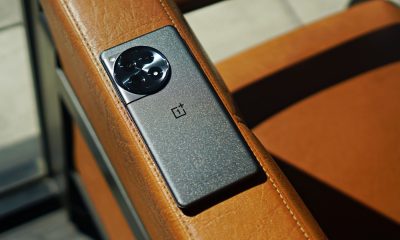
 Reviews3 days ago
Reviews3 days agoOnePlus 12R review: Making sense of OnePlus’ latest flagship
-

 Reviews2 weeks ago
Reviews2 weeks agoChallengers review: A thrilling drama wrapped as a tennis anime
-
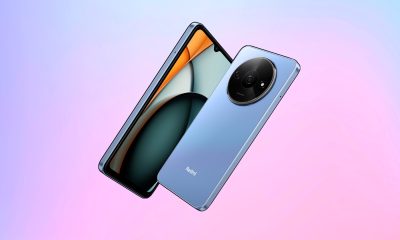
 News1 week ago
News1 week agoXiaomi Redmi A3 Philippine pricing, availability
-
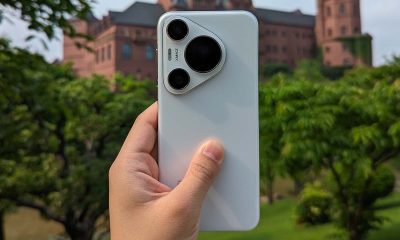
 Smartphones2 days ago
Smartphones2 days agoHuawei Pura 70 Pro Unboxing and First Impressions
-

 Smartphones1 week ago
Smartphones1 week agoInfinix NOTE 40 Pro+ 5G: Philippine pricing, availability


